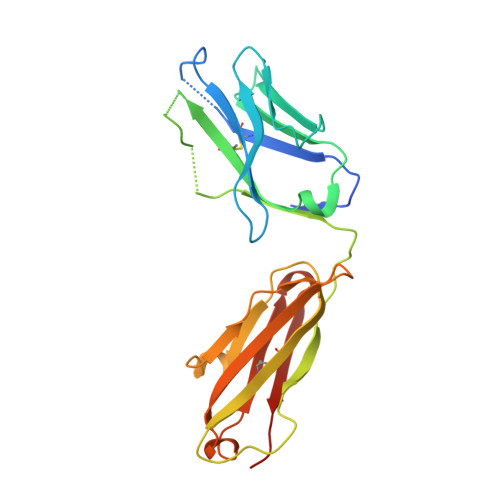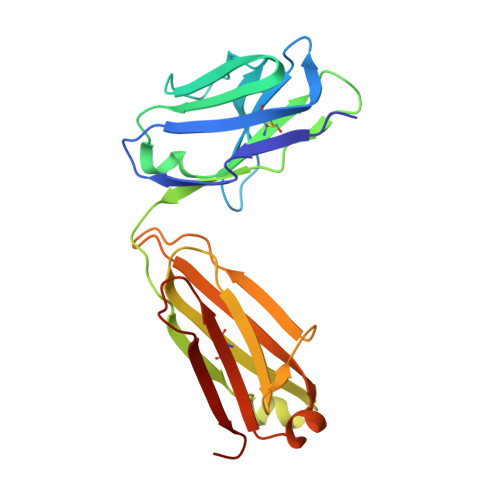Cross-reactive neutralizing human survivor monoclonal antibody BDBV223 targets the ebolavirus stalk.
King, L.B., West, B.R., Moyer, C.L., Gilchuk, P., Flyak, A., Ilinykh, P.A., Bombardi, R., Hui, S., Huang, K., Bukreyev, A., Crowe Jr., J.E., Saphire, E.O.(2019) Nat Commun 10: 1788-1788
- PubMed: 30996276
- DOI: https://doi.org/10.1038/s41467-019-09732-7
- Primary Citation of Related Structures:
6N7J, 6N7U - PubMed Abstract:
Three Ebolavirus genus viruses cause lethal disease and lack targeted therapeutics: Ebola virus, Sudan virus and Bundibugyo virus. Monoclonal antibody (mAb) cocktails against the surface glycoprotein (GP) present a potential therapeutic strategy. Here we report two crystal structures of the antibody BDBV223, alone and complexed with its GP2 stalk epitope, an interesting site for therapeutic/vaccine design due to its high sequence conservation among ebolaviruses. BDBV223, identified in a human survivor of Bundibugyo virus disease, neutralizes both Bundibugyo virus and Ebola virus, but not Sudan virus. Importantly, the structure suggests that BDBV223 binding interferes with both the trimeric bundle assembly of GP and the viral membrane by stabilizing a conformation in which the monomers are separated by GP lifting or bending. Targeted mutagenesis of BDBV223 to enhance SUDV GP recognition indicates that additional determinants of antibody binding likely lie outside the visualized interactions, and perhaps involve quaternary assembly or membrane-interacting regions.
Organizational Affiliation:
Department of Immunology and Microbiology, The Scripps Research Institute, La Jolla, CA, 92037, USA.














